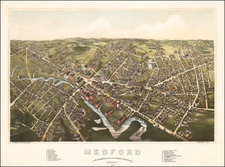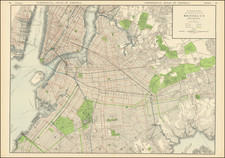From the First Series of Air Navigation Maps in the United States.
This 1925 experimental air navigation map, detailing the route from New York City to Boston is a product of the Engineer Reproduction Plant, Corps of Engineers, under the aegis of the Airways Section, Office Chief of Air Service.
As an artifact of early U.S. aviation history, it offers a detailed portrayal of geographic and man-made features crucial for air navigation, marking a significant step in the development of aerial cartography in the United States.
The interwar period marked a burgeoning interest in the standardization and safety of air travel, driven by both military and commercial imperatives. This map embodies the technological and strategic endeavors of the time, serving as a navigational aid in an era when the skies were becoming increasingly trafficked and the landscape of American transportation was undergoing rapid transformation. The Engineer Reproduction Plant's role in producing such maps indicates the U.S. Army's commitment to enhancing the nation's aerial capabilities.
Notably, the map is arranged with various symbols denoting railroads, highways, cities, towns, and types of landing fields, alongside gradients of elevation—a feature vital for understanding terrain and planning flight paths. The emphasis on accuracy and detail reflects the critical nature of these maps for pilots navigating the expansive and often challenging American West. Magnetic declination, a detail crucial for compass-based navigation, is also carefully noted, underscoring the map's utility for actual flight operations.










![[Battle of Lexington] Journee de Lexington . . .](https://storage.googleapis.com/raremaps/img/small/94722.jpg)


![[Cape Cod area / Nantucket / Martha's Vineyard / Boston Bay]. (Revolutionary War Era Manuscript Sea Chart)](https://storage.googleapis.com/raremaps/img/small/69611.jpg)
![[ Boston Light ] A South West View of the Lighthouse. Situate at the Entrance of Boston Harbour.](https://storage.googleapis.com/raremaps/img/small/97747.jpg)